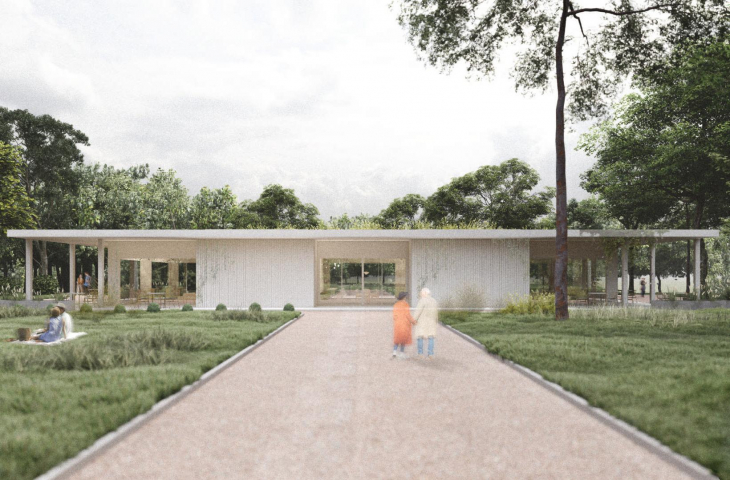Work submitted for the competition
"Best Diploma Architecture".
The history of the park complex in the center of Bialystok dates back to the late 17th century. Its appearance changed over the years, adapting to the prevailing fashions and needs, but it still remained a representative area. Today, in addition to strolling among the trees, we also need places to celebrate the moment.
This function would be fulfilled by the Tea Pavilion in Planty Park, which with its architecture would also raise the attractiveness of the place and enrich the park's program. The project assumes respect for the surroundings and history of the place. With its offerings, the Tea Pavilion would keep people passing through Planty for longer, allowing them to enjoy the green space in the city center. In addition to the pavilion's obvious function, it would also fulfill the role of an oasis of peace and tranquility, providing solace without having to go outside the city. Visitors to the pavilion, while making their way through the park, will experience tranquility, which, according to ancient Japanese tradition, is supposed to clear the mind before consuming tea.



location
© Sara Kowalczuk-Fijałkowska
The building, maintained in the spirit of sustainability, would increase biodiversity in the park through the use of a green roof. The challenge undertaken in this project is the chosen location, which places demands on the form, the location of the building in the historic park and its function. The conceptual design of the Tea Pavilion was designed according to the five principles of modern architecture created by Le Corbusier. Functionalism, having its origin in the Bauhaus school, is also an important aspect. The large space of the pavilion allows the interior layout to be freely created and adapted to changing demand with the seasons.



visualization of the pavilion
© Sara Kowalczuk-Fijałkowska
Indispensable in the creation of the project's concept was a site visit to Planty Park, which allowed us to determine the needs and changes to be made in the area. The service facilities currently located there are not representative. They should complement the park establishment and beautify the space. The proposal to locate the object in Planty Park, as shown by the multifaceted analysis of a fragment of the center of Bialystok, is all the more justified because there is a lack of an attractive café, the architecture of the existing catering establishments is poorly oriented; it also results from the needs of residents and visitors. The exact location of the facility has been determined by the axis of the swimming pool with the monument to the Prachkists, which further creates harmony and an intended composition.



projection
© Sara Kowalczuk-Fijałkowska
The impetus for the conception of the design of the Tea Pavilion was the observation of Planty Park, its offerings, the changing needs of the local community and tourists. The author's own experience of the work was an important factor in the design, and significantly influenced the program and offer of the pavilion. The observed shortage of year-round premises in the park and the increased interest in Planty Park, and thus the services located here, influenced the size and form of the building. A large amount of glazing, showing the interior of the building, attracts customers; comfortable, covered terraces are additional space for consumers, whose number increases significantly in the summer season.



cross-section
© Sara Kowalczuk-Fijałkowska
Despite its large area (over 500 square meters), the building is the opposite of monumental, squat structures. The single-level building with a simple, lightweight form blends in with its surroundings, and the glass walls give the impression of greenery "pouring" into the interior.
{Image@url=https://cdn.architekturaibiznes.pl/upload/galerie/64526/images/original/434850067799637a65b13eae3a4fbe5b.jpg,alt=wnętrze of pavilion,title=interior of pavilion}
interior of the pavilion
© Sara Kowalczuk-Fijałkowska
Sara KOWALCZUK-FIJAŁKOWSKA
Illustrations: © Author



































